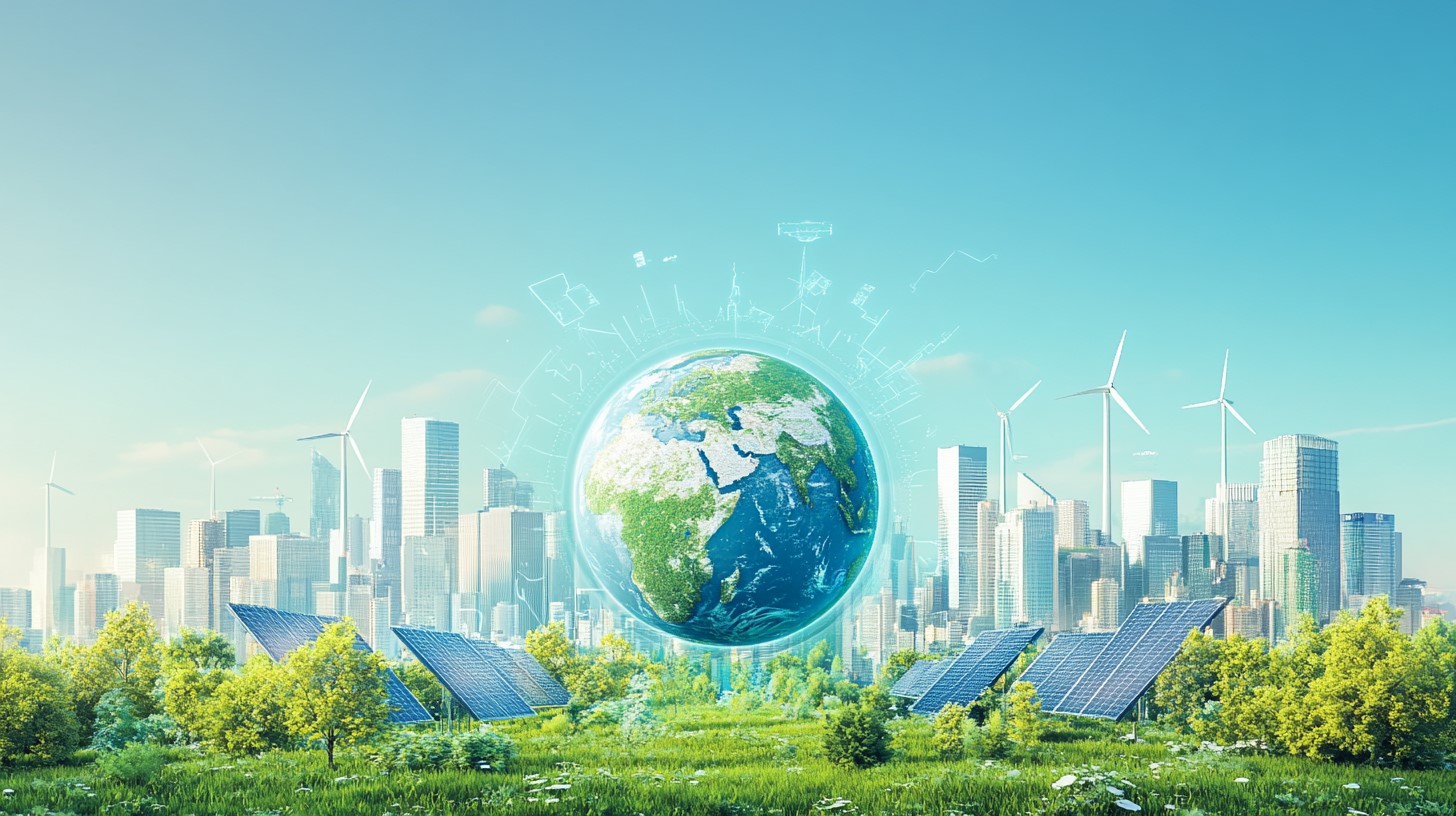The Paris Agreement and Limiting Global Temperature to No More Than 1.5 Degrees

The Paris Agreement is a significant international treaty on climate change, adopted at the COP21 conference in Paris in 2015. Its primary goal is to limit the increase in global temperatures to below 2 degrees Celsius above pre-industrial levels.
What is the Paris Agreement?
The Paris Agreement is an international treaty under the framework of the United Nations Framework Convention on Climate Change (UNFCCC). Its primary goal is to limit the increase in the global average temperature to below 2 degrees Celsius and to strive to keep it within 1.5 degrees Celsius above pre-industrial levels.
This agreement was established during the COP21 conference in Paris, France, on December 12, 2015, with three key objectives:
- To control the rise in global temperatures
- To enhance adaptive capacity to cope with the impacts of climate change
- To facilitate financing that aligns with low greenhouse gas emissions development
The Paris Agreement came into effect on November 4, 2016, after it was ratified by over 55 countries, accounting for more than 55% of global greenhouse gas emissions. Currently, 197 countries, including Thailand, have signed the agreement.
This agreement differs from the earlier Kyoto Protocol by not distinguishing between developed and developing countries regarding greenhouse gas reductions. Instead, it allows each country to set its own emissions reduction targets (a "bottom-up" approach), making it the first legally binding global agreement that encompasses all countries in the fight against climate change.
Understanding the Key Goals of the Paris Agreement
The Paris Agreement includes several essential goals and components aimed at effectively addressing climate change:
-
Limiting Greenhouse Gas Emissions: The agreement aims to achieve a global peak in greenhouse gas emissions as soon as possible and then reduce emissions rapidly to achieve a balance between emissions and absorption of greenhouse gases in the second half of this century.
-
Support from Developed Countries: Developed countries have committed to providing financial support, technology development and transfer, and capacity-building assistance to developing countries. This support is intended to help these countries effectively implement the agreement.
-
Nationally Determined Contributions (NDCs): Each country must prepare a "Nationally Determined Contribution" (NDC), which outlines its targets and plans for reducing greenhouse gas emissions. Countries are required to submit their NDCs every five years, showing progress and increased ambition with each submission.
-
Transparency Framework: The agreement establishes a transparency framework to monitor and report on each country’s progress. This includes tracking greenhouse gas reductions, adaptation efforts, and support received or provided to other countries.
-
Global Stocktake: Every five years, starting in 2023, there will be a global assessment of progress towards the agreement’s objectives to ensure that the world is on track to meet its goals.
-
Adaptation to Climate Change: The agreement emphasizes enhancing the capacity to adapt to the negative impacts of climate change and promoting resilience and recovery from these effects.
These components work together to create a comprehensive and flexible framework that considers the differences between countries while still striving toward the shared goal of addressing climate change.
Challenges in Advancing Towards the Goal
Achieving the objectives of the Paris Agreement faces several major challenges:
-
Rising Greenhouse Gas Emissions: Despite efforts to reduce greenhouse gas emissions, global emissions continue to increase. By 2022, the average global temperature was already 1.1-1.2°C above pre-industrial levels, approaching the 1.5°C threshold that the Paris Agreement aims to limit.
-
Ambitious Emission Reduction Targets: To keep global temperature rise to 1.5°C, greenhouse gas emissions must be reduced by at least 50% by 2030. This is a demanding goal that requires significant efforts from all countries.
-
Energy Transition: There is a need to accelerate improvements in energy efficiency, increase the share of renewable energy, and rapidly reduce reliance on fossil fuels. This presents technological and economic challenges.
-
Inequality Between Countries: Developing countries often face limitations in resources and technology to achieve these targets, while developed countries need to provide adequate financial and technological support.
-
Economic Sector Adaptation: Many countries face challenges in restructuring their economies and industries to align with emission reduction targets, especially in sectors that depend on fossil fuels.
-
Monitoring and Reporting: Creating transparent and effective monitoring and reporting systems for all countries presents technical and managerial challenges.
-
International Politics: Political conflicts and competing interests between nations can impact cooperation in implementing the Paris Agreement.
Addressing these challenges requires international cooperation, technological innovation, and serious policy adjustments at both national and global levels to meet the goals of the Paris Agreement and effectively tackle climate change.
Progress and Actions
The progress in implementing the Paris Agreement is as follows:
- Submission of NDCs Targets: Member countries submitted their initial Nationally Determined Contributions (NDCs) in 2015, and targets were reviewed to be more ambitious in 2020, as outlined in the agreement. Thailand submitted its first NDC in 2015, aiming to reduce greenhouse gas emissions by 20-25% by 2030.
- Annual COP Meetings: The Conference of the Parties (COP) under the United Nations Framework Convention on Climate Change is held annually to monitor progress and negotiate critical issues. COP26, held in Glasgow in 2021, underscored the urgent need to accelerate actions to reduce greenhouse gas emissions.
- Development of Long-term Strategies: Many countries have developed Long-term Low Emission Development Strategies (LT-LEDS), as promoted by the Paris Agreement. Thailand is currently in the process of formulating its own long-term strategy.
- Financial Support: Efforts have been made to mobilize funds to support Paris Agreement implementation, with developed countries pledging to raise $100 billion annually by 2020 to aid developing countries.
- Engagement of Various Sectors: In addition to governments, the private sector and civil society have played a significant role in driving actions under the Paris Agreement, such as initiating greenhouse gas reduction projects, developing clean technology, and raising awareness.
- Development of Carbon Market Mechanisms: Progress has been made in developing international carbon market mechanisms under Article 6 of the Paris Agreement. At COP26, important rules were agreed upon for the trading of carbon credits internationally.
Despite progress in various areas, the implementation of the Paris Agreement still requires accelerated action and increased ambition to meet global temperature control goals. This requires serious and sustained cooperation from all sectors and countries.
Summary and Future Directions
The Paris Agreement marks a significant turning point in addressing global climate change. While there has been progress in various areas, substantial challenges remain in achieving its goals:
-
Gap Between Goals and Actions: Although countries have set their Nationally Determined Contributions (NDCs), the collective efforts so far fall short of limiting the global temperature rise to below 2°C. Increasing the ambition of these targets and accelerating actions are urgently needed.
-
Energy Transition: Shifting from fossil fuels to clean energy is essential, yet there are still technological and economic obstacles, especially in developing countries.
-
Financial Support: The goal of mobilizing $100 billion annually to support developing countries has not been met, creating a barrier to effective implementation in these regions.
-
International Cooperation: Political conflicts and national interests remain obstacles to joint action. Building trust and enhancing international cooperation are essential.
-
Adaptation and Resilience: Beyond reducing greenhouse gas emissions, strengthening the ability to adapt to climate change impacts is crucial, particularly for vulnerable countries.
Achieving the Paris Agreement’s goals requires commitment and decisive action from all sectors, including governments, private sector entities, and civil society. Additionally, the development of new innovations and technologies is essential to support the transition to a low-carbon society. Success in the Paris Agreement will not only alleviate the climate crisis but also create opportunities for building a green economy and a sustainable society for future generations.
About Optiwise
Optiwise offers Investor Relations & ESG consulting services, corporate website design, and IR website development. We also provide advisory services for initial public offerings (IPOs) and assists in preparing disclosure documents for public companies. Additionally, our public relations efforts aim to build credibility and enhance the corporate image.
For more information about Optiwise's services, please contact us here.


